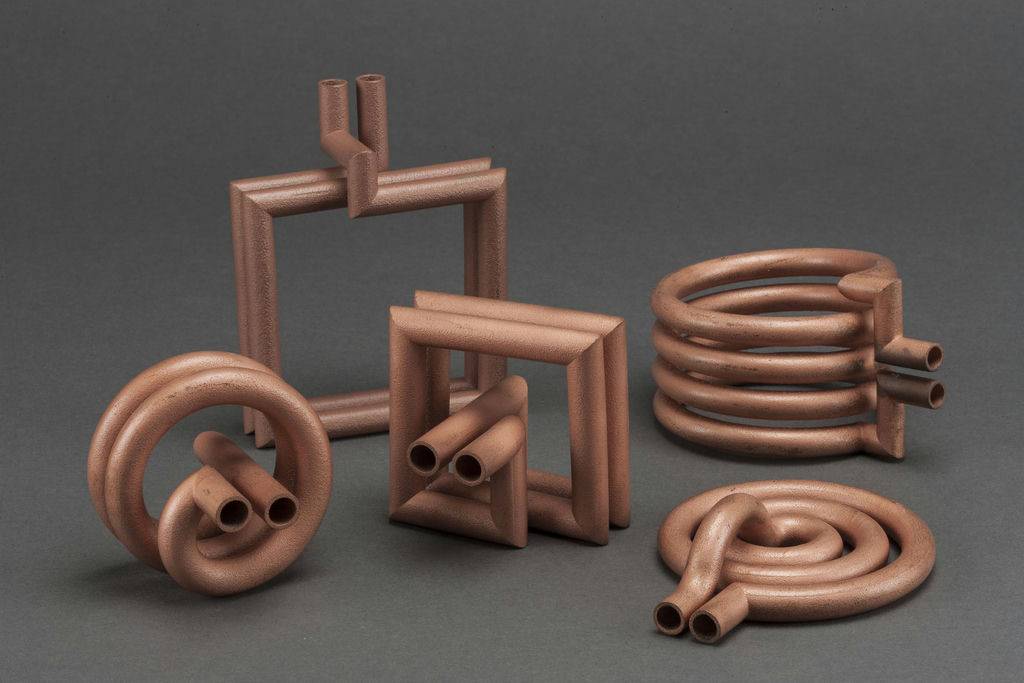[vc_row][vc_column][vc_column_text]In this interview, managing director Dr. Ralf Gärtner explains their business model, his vision for additive manufacturing in the year 2030, and PROTIQ’s reasons for collaborating in the Additive Manufacturing Association.[/vc_column_text][/vc_column][/vc_row][vc_row][vc_column width=”1/2″][vc_column_text]Could you provide us with a short introduction to Protiq GmbH?
Dr. Ralf Gärtner: With pleasure. On the one hand, we are an AM manufacturer, currently with 15 systems for additive processing of plastics and metals. This includes laser sintering and selective laser melting as well as poly-/multijet and stereolithography; in part, we implement our own system technology, manufacturing with difficult materials, such as copper, brass, or zinc. We are producing for the world market, being online as Protiq America, and we will soon begin Protiq India. Wherever Phoenix Contact has infrastructure available, we will manufacture. After all, if components may be manufactured overnight, you should not waste a week with transport. On the other hand, next to our business as a manufacturer, we are building up an AM market place. It is important to aim our business processes at options available today. As the one responsible for tool construction at Phoenix Contact, I see how there are often weeks passing between the first inquiry and delivery. On our platform, customers can upload 3D data, immediately analyze them and optimize them as needed, compare material and manufacturing costs, as well as immediately order. For this purpose, we created a secure platform algorithm. In addition, we involve external partners, such as FKM or Steinbach AG, to be able to offer our customers a comprehensive range of AM technologies and materials.[/vc_column_text][/vc_column][vc_column width=”1/2″][vc_single_image image=”3744″ img_size=”full”][vc_single_image image=”3741″ img_size=”full”][/vc_column][/vc_row][vc_row][vc_column][vc_column_text]How is the platform’s value chain organized?
Gärtner: The order process, billing, and data handling are digitally fully integrated along the AM process chain: vertically as well as horizontally. Payment providers and logistics services providers are connected via interfaces, and they receive all data fully automatic. Additionally, we have a cooperation with Conrad Electronic. Via their website, customers can upload 3D data to us and get them manufactured by us. This is a fully digital, highly automated process, too. We manufacture single parts, prototypes as well as small batch series, and one of our core areas is special materials. Among other things, we are the only manufacturer around the world who can additively process highly conductive copper. In order to broaden our range of materials, we are also cooperating closely with material producers. They supply new alloys. In return, we develop process parameters for processing these additively. This way, both sides profit. We foster similar development cooperation with various system manufacturers as well as in postprocessing. Our offer gets topped off with our services surrounding the construction process: for example, simulations of magnetic fields for inductors or for topology optimization of AM parts, as well as training and consulting. Based on this experience, we are further driving the development of our platform together with our partners, for example by optimizing our configurations for inductors and gears. In the end, we standardize parameters of concluded projects, thus creating automated engineering solutions. In this manner, the configuration of copper inductors becomes an affair of mere minutes. They will reach the customer five to eight days later. Traditionally, this process takes up eight to ten weeks. In the coming weeks, we will launch an online topology optimizer together with our partners, which will guide customers in a mostly automated manner towards an optimized component design on the basis of their component’s load requirements.
From which sectors are those customers who order AM parts from you?
Gärtner: So far, 99 percent of them are B2B customers: mechanical engineers, systems and tools manufacturers, medical technology companies, companies belonging to the automotive industry, electrics and electronic sector, but also some belonging to architecture, artisan craftwork, or fair and exhibition construction. More and more customers use AM for spare parts procurement. Optimizing traditional manufacturing technologies also plays a large role, for example additively manufactured, conformally cooled tools. Part of this is also the fast-growing inductor business. For these applications, we are dealing with professional customers who have high requirements for AM parts, as they will be implementing them in series. In such small-batch series, look-and-feel and mechanical properties need to meet the standards of traditionally manufactured solutions. Certification is another topic. Customers expect us to present them with certificates relevant to their sectors.
Do you as a user wish an optimization of today’s system technology?
Gärtner: Even if it has become better, it is far from mature. This begins with the range of materials which is still limited. Technical thermoplasts and standard plastics, such as polyethylene or polypropylene, which can be processed additively and also offer industrially needed mechanical properties, are rare. The same goes for the metals sector and the processing of high-strength steels. Appropriate materials and system technology are not yet available. For this, we are in part developing our own solutions – also to prove we are serious about it, too. It is also important to establish leaner, flowing AM processes. After all, the advantage of AM is that we can produce complex individual parts. However, the trend is to batch as many parts in the installation space as possible, and to wait until the last part is ready. We need solutions to produce a piece in a flow! Faster than today, for example through lighting of whole levels instead of single points, or through a material supply that differs from the powderbed. We also need interfaces, in order toguide components automatedly to post-processing. There is also a need for optimization in documentation and quality control. Vital features are lacking, so that we in part develop them ourselves because we need them!
How do you picture a typical AM process chain in the year 2030 – and who will be using it?
Gärtner: We will see automated process chains mixing several technologies, and AM being just one station among many. Subtractive and additive technologies will work together to optimize components’ functionality, and to manufacture in a manner that uses resources efficiently. This process chain will be fully automated, not only on a hardware level; it will also have digital chaining so that AM systems and mills will know where to build up material and where to remove it, so that the eroding machine will be able to have material available that is needed for the process step, and so the measuring machine will know from the CAD data which measuring points to head for in a component. Automation is needed so that additive manufacturing can have a future at this location.
What were your goals in joining the Additive Manufacturing Association?
Gärtner: Just like manufacturing processes need to be in a network, so we as players also need to network. We cannot nor do we want to bring AM process chains to maturity on our own, instead, we are relying on the collaboration of system manufacturers, suppliers, material suppliers, and researchers. We meet them all in the Association. Together, we can address important questions such as standardization, certificates, or lobby work on a political level. After all, we need a reliable and practical regulatory framework in order to anchor additive manufacturing as an industrial process. This is as much true for questions of product liabilityas it is for occupational safety or industrial property rights.[/vc_column_text][/vc_column][/vc_row]


